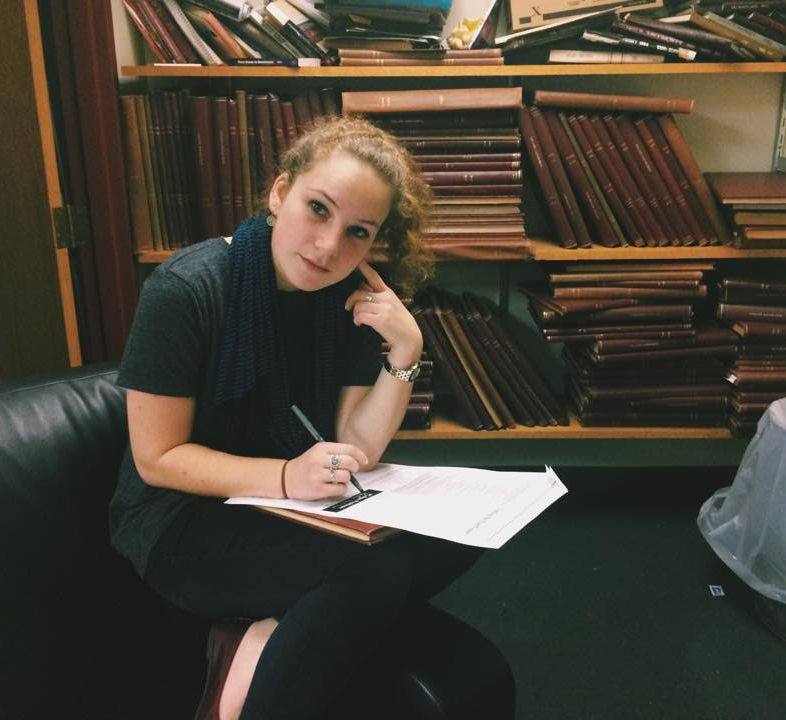The Last Year of Lois
I’ve always wanted to be a journalist. Growing up, I would watch black and white videotapes of The Adventures of Superman, my dad’s favorite childhood show. While my dad relived the thrilling escapades of his youth, I focused on Lois Lane, the gutsy news reporter who worked with Clark Kent at the Daily Planet. She was determined to get the scoop, but never noticed that Kent always happened to be missing whenever Superman would save the day. Still, rather than the climactic scenes of heroism, I preferred to watch Lois Lane and Clark Kent circulate the newsroom with their reporter’s notebooks in hand, talking a mile a minute to brainstorm the latest leads.
Inspired by my role model’s go-getter attitude, I hit the ground running and wrote for my elementary school’s newspaper, For Kids By Kids, whose motto was “the youth, the whole youth and nothing but the youth.” I reported on the pressing topics of lemonade stands and school supplies, and asked the hard-hitting questions: Who is your favorite American Idol contestant? Next, I wrote for my middle school’s newspaper, The Roosevelt Rough Rider. Just like Lois Lane, I was a tad oblivious to my surroundings. In 2008, I was clearly unaware of the changing times: I penned an opinion piece that strongly argued against moving our print newspaper online, titled “RoughRider.com/NOT!” By the time I finally had the opportunity to take formal journalism classes in high school, I considered myself a young Lois-in-training.
As editor-in-chief of my high school’s weekly paper, The Hi’s Eye, I spent most of my senior year running around the newsroom in a frenzy. I loved that after each week spent brainstorming stories, interviewing sources, editing articles, laying out pages and, of course, managing last-minute crises to beat the deadline, I could point to a physical representation of my work. It was exhilarating to personally deliver the newspaper to my friends in their homerooms every Friday morning. Even though our news articles still only focused on student theater productions and curriculum changes, I felt I might burst with pride any time I saw a student reading the paper in the cafeteria.
Entering college, I could not wait to finally tackle the meatier stories I had been itching to cover. I chose Colgate in part because of its Maroon-News pre-orientation program, which allowed me to join the newspaper staff the moment I stepped on campus. On my first day of college, I interviewed Dean of the College Suzy Nelson. I did not yet know where my dorm room was, but I knew that I had found my place.
Each week on staff, I would anxiously await the next breaking news story. Yet I quickly realized that the biggest stories on college campuses were often the most tumultuous. These were not tales of how Superman foiled Lex Luthor’s evil schemes in Metropolis, but rather accounts of exclusion, heartbreak and suffering. When reporting on sit-ins about racial injustice and speak-outs about sexual violence, I understood that these protests derived from community members’ trauma. I felt guilty capitalizing on my peers’ pain for my own journalistic gain.
In all of my roles on the Maroon-News staff – from writer to News Editor to Editor-in-Chief – I have attempted to accurately portray students’ lived experiences and do them justice. However, I’m not just polling my peers about their favorite snacks anymore. I am now tasked with telling their stories. As a result, I’ve found the responsibility of portraying all sides fairly and comprehensively daunting. Further, I’ve found that journalistic protocol often conflicts with my moral code, which has necessitated tough judgment calls. For instance, I find it difficult to emotionally detach from a story and, consequently, I struggle with the objective and dehumanizing way I must report on a student’s pain.
In order to counter these frustrating limitations, I have attempted to deploy the Maroon-News as a site for student activism. I hoped that under my leadership, the Maroon-News would become a more legitimate, widely-read news source that could serve as a mouthpiece for the student body. In my last year on staff, I am proud of many initiatives that have helped us to achieve this goal. Students have increasingly utilized the Commentary section as a forum to express their opinions about contentious topics like Torchlight, our online and multimedia presence has grown and we’ve contributed to important conversations by devoting a special edition to community members’ experiences of racial profiling on campus. Seeing the newspaper significantly impact the Colgate community has been immensely gratifying.
After publishing 23 issues, I must relinquish my role as Editor-in-Chief. This goodbye is especially poignant because for the first time, I am not moving on to a bigger and better newspaper. The Maroon-News is the last stop on my pre-planned trajectory, and I couldn’t think of a better newspaper with which to conclude my journalistic career. Through the Maroon-News, I have been privileged to host Pulitzer Prize-winning journalist Sacha Pfeiffer, lead pre-orientation to welcome a new generation of journalists to Colgate and spend every Tuesday of the last four years (eating free Slices) with a dedicated staff of likeminded, passionate journalists.
As graduation nears, I’ve accepted that I will not grow up to become Lois Lane. Although I am not going to pursue journalism professionally, I am taking with me the practical skills I have honed and, more importantly, the valuable lessons I’ve learned throughout my tenure as a Lois-wannabe.
Moving forward, I’m eager to effect change, rather than just report on it. No more sitting on the sidelines with a tape recorder waiting to interview the important sources. Instead of taking notes, I’m ready to participate.









